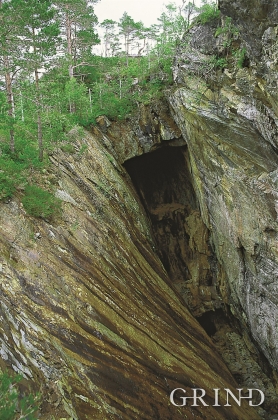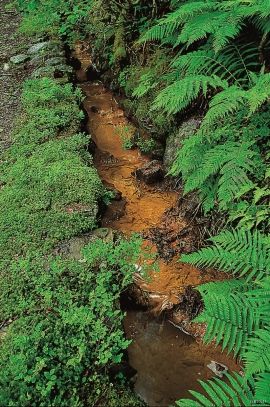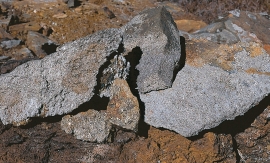Published: 23.06.2015 | Author: Haakon Fossen
VALAHEIA MINES
There is still a lot of ore in the abandoned mines on Varaldsøy Island. If today's prices and availability of ore continue, it is doubtful whether the mines will resume operation. But, the pyrite is there, if the market should return. On Varaldsøy Island one finds at least nine mines and prospect pits, that for the most part date back to the latter part of the 1800s.
Optimism was large when an English company found pyrite ore, first in Valaheia and later in occurrences that got named "Nygruva" (New Mines). The mines at Valaheia had an annual production of up to 16 000 tonnes of pyrite in the beginning. Falling prices eventually led to reduced activity, until it ceased operations at the end of the 1800s. Since then, the mine has been in operation periodically, with most activity during the First World War, when 6000 tonnes of ore were taken out.
The deposit at Valaheia stretches deep underground from the area of the mine toward the northwest. The ore contains 40% sulphur and 0.4% copper. The ore from Nygruva has a higher zinc and copper content, but otherwise they are quite similar.
The new road to the north on Varaldsøy Island makes it easy to get to these mining areas. From the south one first passes Nygruva. Here, there are remains from the transport system and the mine corridors through which the ore had been removed. Further to the north you take off to the right up the old road to the Valaheia mines. The ore is found in big slag piles between the old homesteads and the roads. The mining roads are located a bit higher up in the valley. Here, one can look down over hundred year-old mine shafts that are around 90 metres deep.
The stream that runs red-brown along the edge of the road, is evidence of the iron-rich ore. (Svein Nord)
Svovelkis
One finds pyrite everywhere in the the mine area. Pyrite is a brassy golden colour, a shiny metallic mineral that preferably forms cubic crystals. It is a combination of iron and sulphur that is used, for example, in the production of sulphuric acid. Usually the gold and copper, that occur together with the pyrite, give the biggest economic return. Many people have confused the golden-coloured pyrite with real gold.
- Foslie, S.; Dietrichson, B. 1955. Kisdistriktet Varaldsøy-Ølve i Hardanger og bergverksdriftens historie. Norges Geologiske Undersøkelse 147.
- Ragnhildstveit, J.; Helliksen, D. 1997. Geologisk kart over Norge, berggrunnskart Bergen – M 1:250.000. Norges geologiske undersøkelse
- Sigmond, E. M. O. 1998. Geologisk kart over Norge, berggrunnskart Odda – M 1:250.000. Norges geologiske undersøkelse.





